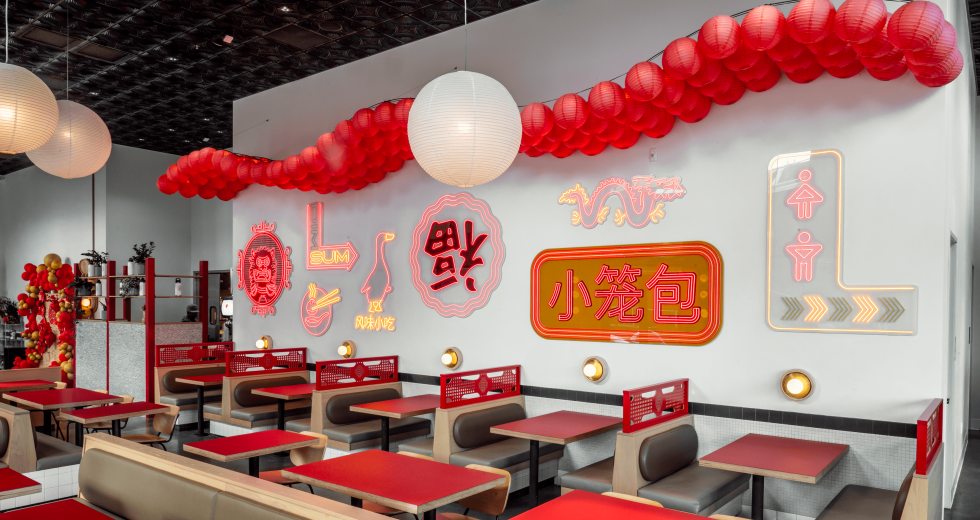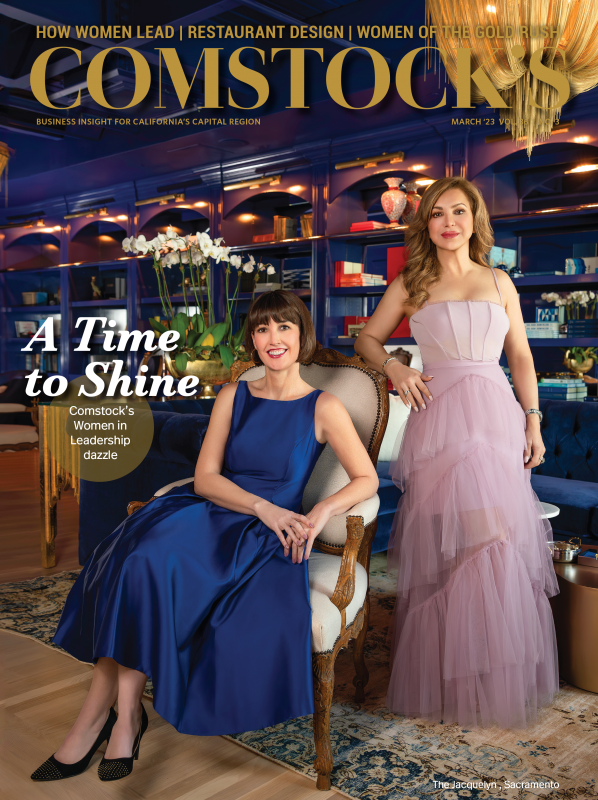Dining out has always been about more than the food. At its best, it’s an immersive experience that plucks you from the slog of daily life and transports you to a place and moment intended to delight the senses, if only fleetingly. That’s why what a restaurant looks and feels like is such a vital part of what it means to gather together over a meal. Comstock’s took a look at three restaurants in the Capital Region where the interior design is as thoughtfully conceived as the cooking, places so special they’ll have you second guessing yourself the next time you’re tempted to order takeout.
Rose Park Bistro, Roseville
Glamour came to the suburbs with the opening of Rose Park Bistro, a chic yet convivial restaurant and bar located in the Fountains at Roseville shopping center. Co-owner Bulent Ozel and his business partners designed the space with consultation from Bulent’s sister-in-law, Zuzana Ozel, an interior designer.
“We wanted to give our customers a place that felt comfortable but also classy,” says Bulent Ozel, who also operates Park & Howard Bistro in Burlingame.
The design hits its mark, setting a mood that is upscale but never off-putting. The comfy tufted velvet chairs and banquettes make it easy for diners to settle in and soak up the atmosphere while savoring dishes like herb-crusted lamb chops alongside a glass of pinot.
It is a particular challenge to breathe character into what is an otherwise nondescript mall space, but Bulent and his collaborators succeeded by focusing on grand design gestures that make a big impact. Take the wide black-and-white striped tile floor laid in a diagonal formation that is anything but subtle. “These happen to be the favorite colors of our ownership team,” explains Bulent. “When we put the idea for the striped flooring together, we just thought it would signal that this is a fun place.”
Overhead, a constellation of large orb-shaped pendant lights dangles from the high black ceiling, bringing definition to a space that might otherwise feel cavernous. “We saw the idea in a magazine and really liked the concept,” says Bulent. “It feels like you are in the clouds when you are in the restaurant, and it gives a really good ambiance to the room.”
Rose Park Bistro in Roseville sets the mood with rich velvet
chairs and banquettes and warm dangling pendant lights.
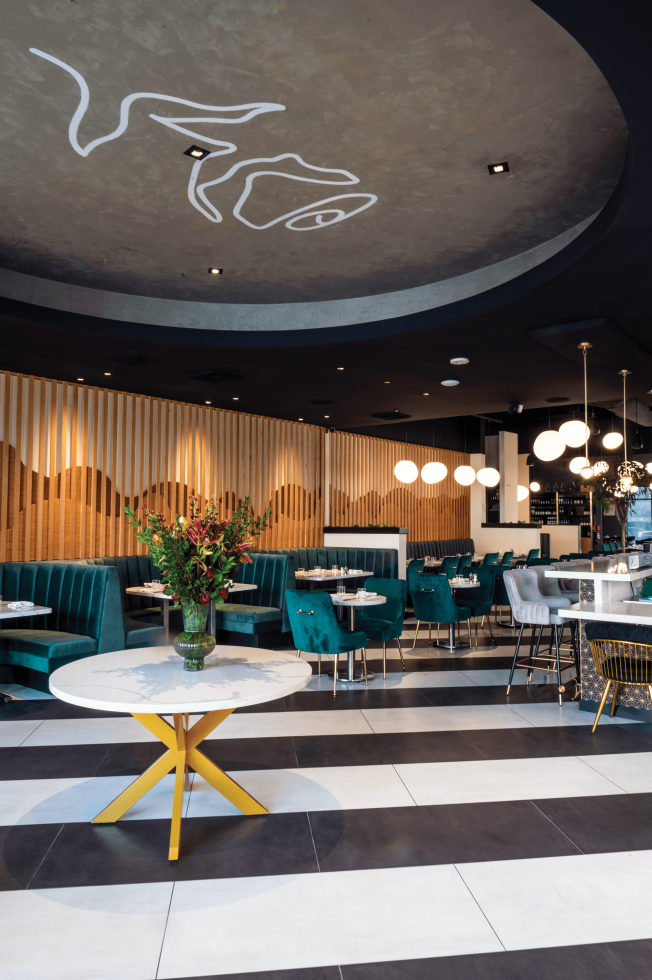
Statuswood, a design studio based in Hayward, designed and fabricated the hostess station and wine cabinet as well as the distinctive brass and wood shelving that hovers over the back of the bar. “Their work really has a lot of character,” says Bulent. “We’ve gotten so many compliments on the design.”
There are also small but meaningful details that add to the bistro’s personality. The restaurant’s logo, a line drawing of a rose stem, is painted on the recessed ceiling of the entryway and also appears on the stemware and the steak knives. And each table is topped with a quaint brass lamp with a crystal shade, infusing the room with “a little romantic ambiance,” as Bulent puts it.
“We’re really proud of what our team has put together,” says Bulent. “It’s a special place, and we hope diners feel that.”
Cantina Pedregal, Folsom
The landscape serves as the muse for the interiors at Cantina Pedregal, the highly anticipated Mexican restaurant opening this spring in the Folsom Pointe shopping center next door to Mikuni.
The venture brings together the restaurateurs behind two Bib Gourmand-awarded restaurants: Patricio Wise and Cinthia Martinez of Roseville’s Nixtaco and Brad Cecchi and Clay Nutting of Sacramento’s Canon. The partners enlisted designer Matthew Lechowick and architectural firm Studio Oxeye to assist with the design.
Named for the community in Monterrey, Mexico, where Wise and Martinez grew up, Cantina Pedregal borrows its inspiration from the natural surroundings of both their native home and the rolling hills surrounding Folsom.
“The interior pulls from the organic colors of the landscape,” explains Nutting. “We even looked at the natural earth tones and terra cotta colors in the sediment from a rock slide — colors that align with the terroir of both locales.”
The landscape, natural surroundings and earth tones influence
Cantina Pedregal, a new Mexican restaurant in Folsom that is the
unique collaboration of four chefs and restaurateurs. Their
colorful serving dishes are handmade.
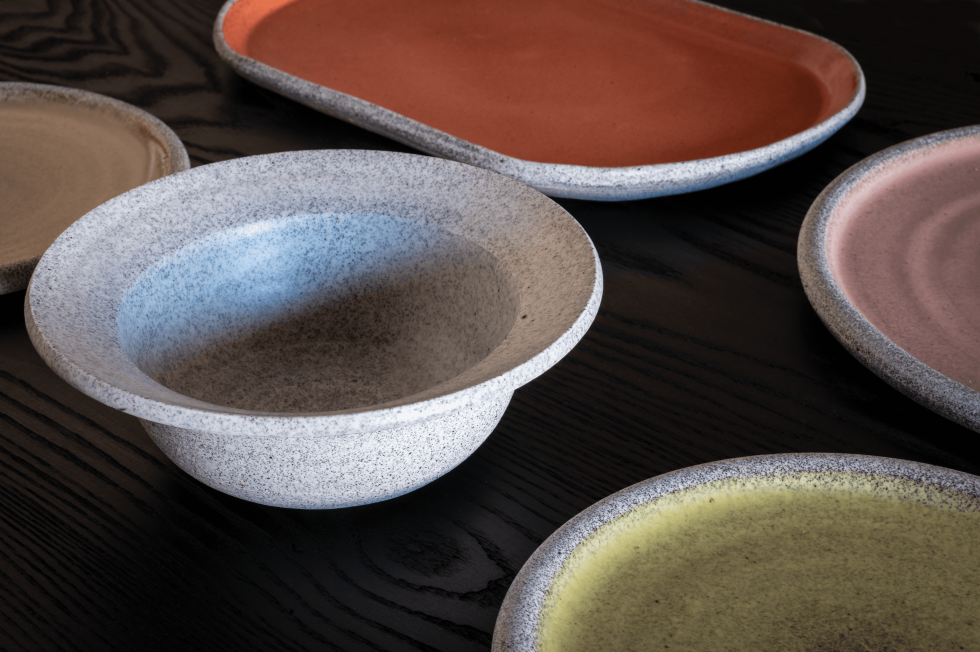
Fittingly, pedregal is the Spanish word for a stone-covered hillside, a nod to the deep influence of the natural environment. In keeping with that theme, a quail is featured in the restaurant’s branding. “It’s a creature from both California and Mexico, a friend that you’ll find in the thistle and the brush in both places, so it felt like a natural icon for us,” says Nutting.
From the yellow ceramic tiles lining the bar backsplash to the walnut furnishings crafted by custom woodworker Phill Moskalets of Phill Built to the handmade serving dishes by Alejandra and Luis Magaña of Echeri Ceramics, the restaurant is a celebration of artisanship.
“Our first inclination was to bring forward a sense of soul, for the place to feel a little worn in, which is hard to do when you’re building something new,” says Nutting. “So we’re accomplishing it with the use of organic materials: stone, wood, ceramics. It gives off that feeling of familiarity and comfort, but also makes for a contemporary and vibrant space. There’s an artisanal passion behind all of it.”
The food at Cantina Pedregal promises that same attention to soulfulness: shared plates inspired by the flavors of northeastern Mexico and made with local ingredients, house-made tortillas and thoughtfully crafted cocktails, including some made with spirits from Nixtaco’s distillery. Just don’t come expecting the standard entree with a side of rice and beans that typifies so many Mexican eateries.
“We have earned trust in the region with Nixtaco and Canon so that people will expect us to do things different and defy expectations of what Mexican food is,” says Nutting.
Journey to the Dumpling, Sacramento
At Midtown Sacramento’s Journey to the Dumpling, the long-awaited second restaurant from co-owners Chris and Yvonne Tan, intrepid design firm Colossus Mfg. saw an opportunity to reimagine the Chinese restaurant’s branding in addition to conceiving a fresh and energetic interior.
“It was important to define their brand, because that was something that hadn’t really been done when they opened their original location,” explains Christina Valencia, who operates Colossus with husband Kele Dobrinski. “What we learned is that the restaurant’s name stems from having traveled the world tasting dumplings, so we wanted to capture that spirit of travel in the design.”
It didn’t take long for the duo to arrive at the idea of creating a wall of neon signs that evoke vividly illuminated Chinatowns around the world. Dobrinski designed each sign personally, working with Sacramento’s Pan Sign Co. on the installation.
“Neon kind of feels busy and chaotic in a good way, so we were trying to bring that forward,” says Valencia. “There’s even one where the Chinese characters are upside down, which symbolizes prosperity pouring into the space.”
Overhead, a dragon-like wave of more than 120 red paper lanterns helps define the lofty space. The massive fixture “is of course iconic to Chinese culture but also serves to bring the eye down visually,” says Valencia.
The little details shine here, too: the attractive latticework separating the booths, the red tabletops, the wall sconces custom made from dumpling baskets, the dishes printed with the restaurant’s logo. “We wanted everything in the space to feel intentional,” says Dobrinski. “Those details are what make the experience.”
In the end, the designers want to evoke the feeling of family as soon as diners walk into the space.
“Chinese food is so much about sharing, about having all those plates on the table and dining over conversation with friends and family,” Dobrinski explains. “The lights, the energy — we wanted to create this really lively experience of going out to eat. Ultimately it comes down to who’s with you at the table, and all of these things add to that shared experience.”
–
Get all the stories in our annual salute to women in leadership delivered to your inbox: Subscribe to the Comstock’s newsletter today.
Recommended For You
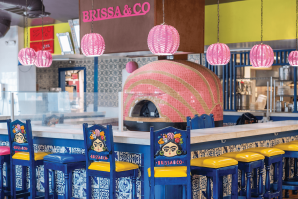
La Dulce Vida
Meet the Capital Region panaderos bringing creative flavors and techniques to Mexican bakery classics
Pan dulce (in English, sweet bread) is being reimagined by intrepid bakers across the Capital Region. Comstock’s recently spoke with three local panaderos who are taking pan dulce to new heights while simultaneously paying tribute to the cultural traditions and food memories that shaped them.

Restaurants Are Hanging Up on the House Phone
How the pandemic and rising costs led to the ‘phoneless restaurant’
This may have happened to you: You call a restaurant, and instead of a live person, you get a recorded voice telling you to leave a message and someone will get back to you. Or even worse, you go online looking for a restaurant’s phone number, only to discover there isn’t one.
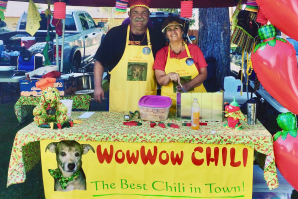
The Chiliheads of Sacramento
National chili competitions are the spice of life for Capital Region retirees — including the founders of Jimboy’s
We’re like a biker gang, but we make chili,” says competitive chili cook Toni Groth, who travels across the country with her husband Mark to fight for the title of World’s Best. Plus, Jimboy’s gives us the chili scoop.
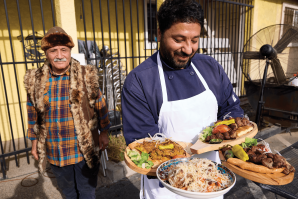
Photo Essay: Afghans Resettling in Sacramento
The Capital Region is home to more than 10,000 Afghan refugees who fled the Taliban. Comstock’s brings you a few of their stories.



